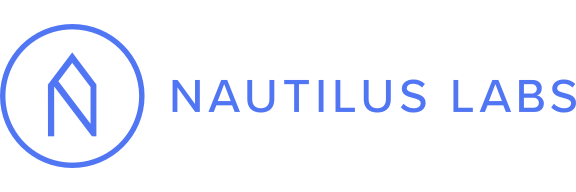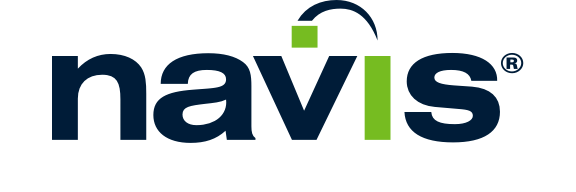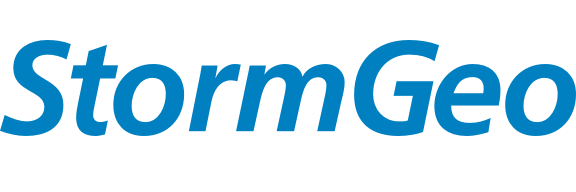Low data quality leads to annual loss of $300,000 per vessel.
We provide shipping companies with high quality data for their requirements in the areas of SAFETY, COMPLIANCE, PLANNING and OPTIMIZATION. Because only those who have trustful data on shore, can make the right decision on board.
70 Years of Marine Precision
70 Years of Marine Precision
In 1949 the German engineer Hans Hugo Karl Hoppe founded the company Hoppe Bordmesstechnik. His business idea was to deliver precise instruments and measuring equipment that could exactly determine the speed and power of seagoing vessels. Many technical inventions and patents for on-board measuring systems have characterized the work-life of Hans Hoppe. Today Hoppe is a family-owned group of companies with a global presence. In many years of organic growth, the company started businesses in various maritime markets to cater to globalized shipbuilding. Combined with countless inventions and patents Hoppe has reached a leading position in several maritime business areas like marine digitalization.
The company‘s continued passion for technology and the permanent motivation to deliver customer-oriented products and services have been the keys to its success. The combination of seven decades of engineering know-how, sustainable on-board experiences with the continuous development of new technologies has made Hoppe a major player in the digitalization process of the marine industry. A key demand of today‘s maritime data acquisition is the exact validation of a large number of a ship‘s operational and nautical measurements after receiving them onshore. Hoppe offers you a convenient one-stop solution with high data quality on-board and superior analysis ashore.
With over 70 years of experience and more than 7,000 installations, Hoppe Marine can be the trusted technology partner in the vessels digitalization process and helps relieve the owners and operators technical personnel. As we have always done and always will do.
What do validated measuring instruments for planning and optimization mean for fleet operation centres in fleet benchmarking?
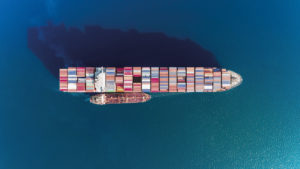
On a container ship, the unnoticed offset of the speedlog of 0.3, as well as the use of static instead of dynamic draught measurement over a period of one year, led to an incorrect adjustment of the dynamic trim position. The assumed operating point with a consumption of 80 tons/day corresponded to the optimum trim of 0.4 m top-heavy at 16 kn for the 330 m long container ship. However, the real dynamic trim was 0.5 m top-heavy at the stern. At an average of 15.7 kn STW (speed through water) this resulted in an additional 4% difference in power requirements. The facts became apparent during an initial analysis catalogue with measurement equipment validation. The omitted savings potential at 200 days at sea and 400 $ / ton MGO was calculated at 300,000 dollars.
Data Butler | Data Inspector | |||
|---|---|---|---|---|
Transparency | Quality | Maintenance | Analyzer | |
ON BOARD | ||||
Ship data server application incl. configuration | ||||
Webbased data transmission software
| ||||
Completeness check for data transmissionSatCom Hardware and Airtime not included. | ||||
CLOUD BASED DATA HOSTING | ||||
Backup protection
| ||||
Unlimited data storage volume | ||||
Full access to raw dataFurther information on our API Developer Portal https://docs.hoppe-sts.com. | ||||
Flexible configuration of vessel data
| ||||
Data Quality API
| ||||
DAILY CHECKRoutine work is performed every regular working day by a service technician. | ||||
Daily System Health Check
| ||||
Fleet Data quality timeline | ||||
Total Fleet Data quality timeline | ||||
Data check for validity and threshold exceedances
| ||||
Fleet Data Summary | ||||
PROFOUND VALIDATION AND TROUBLESHOOTINGValidation chapter of Data Analysis Catalog will be carried out quarterly. | ||||
Measurement devicesProfound validation of the following devices will be carried out:
| ||||
Downtime AnalysisDowntime analysis for systems and signal. | ||||
Primary signals Correlation matrixCorrelation and time series evaluation of ISO19030 primary signals to detect specific behavior, sensor errors and offsets. | ||||
Troubleshooting AnalysisOne individual troubleshooting per vessel and year according to vessels under contract. Use cases for an evaluation are e.g. Data Gaps, Speed Claims, Groundings, Bunker Claims.
| ||||
SERVICE LEVEL AGREEMENTS | ||||
Basic (Tier I)
| ||||
Advanced (Tier II)
| ||||
UPCOMING FEATURES | ||||
csv / Excel Download
| ||||
Full access to high-resolution data
| ||||
HODROP - File Sync
| ||||
Daily evaluation of data quality is performed by a team, consisting of marine engineers, naval architects and experienced service technicians. For at least once per working day, the team visualizes and traces data losses, implausibilities and deterioration in quality on the highest aggregated level. Based on sudden events and also on gradual changes, technical clarification and troubleshooting is done. Situations which can be solved internally by analyzing the data with the Hoppe Marine Signal Inspector, Data Analysis Catalog or by remote access, as well as the communication with clients or third party providers in terms of interface troubleshooting, are part of the daily business.
In case conspicuous sensors are detected, further agreements with clients are possible to directly offer corresponding spare parts and service jobs.
In case a signal is transmitting invalid data of a normally intact sensor, a check regarding implausible behaviour due to unfavorable environmental or operating conditions is done, to figure out whether the sensor is malfunctioning or not. For example, the alleged offset of a flow meter on a ship during standstill can be of various reasons.
In case conspicuous sensors are detected, further agreements with clients are possible to directly offer corresponding spare parts and service jobs.
The data quality is based on the quality of every single signal. One can distinguish between Primary Signals (data essential for reporting and optimization of operation) and Secondary Signals (further ship operation data for monitoring, planned maintenance, etc.) to output aggregated quality. The quality for each signal is calculated in consideration of invalid and implausible data (limit value exceedance, etc., application of algorithms).
Furthermore, with the Data Analysis Catalog a correlation matrix will be created, including the evaluation of different engineering processes and their relationship on board. The correlation has no direct influence on data quality, since in this case an evaluation for the exact determination of the faulty input variable is performed by a technician.
Yes, all system-included sensors and values can be monitored. The detection of failed interfaces and malfunctioning sensors, as well as testing the exceedance of operationally not reachable limit values are part of the scope of performance. Normally, in-depth validation algorithms that assume knowledge about sensor behavior, can only be applied to sensors made by Hoppe Marine.
The package “Operational Analyst” includes complete or customized analysis catalogs that offer in-depth information about the vessel operation. The fact sheet for the Data Analysis Catalog can be found on the hoppe-marine.com website.
The Hoppe Ship-to-Shore connection does not provide any own VSAT connection. Therefore the client must ensure to have a VSAT connection available. For the communication with the land-based servers, the following IP addresses on the corresponding port for outgoing TCP data traffic of HOMIP2 must be enabled in the vessels firewall.
Primary Address – IP: 75.2.111.192 – Port: 11550
Fallback Address – IP: 99.83.166.216 – Port: 11550
A detailed checklist will be provided upon request.
In terms of data storage, Hoppe Marine utilizes the structure of a “Data-Lake”. It is based on a concept in which structured data can be loaded into the data pool from a variable source. In this term structured data means e.g. log data, telemetry data etc. In the field of data analysis, time series data in various formats are the most relevant data. Currently, the following formats are accepted: CSV, JSON, SQLite and Parquet. Furthermore, it is important that the client defines the column name-assignments, due to the fact that for evaluation the data must be set to a universal naming standard.
Data transmission is based on packages, their content is irrelevant. The only important thing is, that all packages need to be cryptographically signed prior to transmission to give proper evidence regarding their source. Therefore Hoppe Marine offers a crypto-software-solution on HOMIP units, capable of signing data of various sources. In this case a REST API enables access to this feature.
Currently, this feature is available only for Hoppe-internal services. The release of the interface for data transmission of external partners is part of our release plan 2021.
However, the embeddded iPC HOMIP supports several protocols for data collection. with the iDBS database solution Hoppe Marine offers a feature to make use of interfaces of other manufacturers to store the data and to make it available on shore side. This feature is available right after activation of the service.
The Ship-to-Shore transmission utilizes a multi-level safety concept. This concept distinguishes between Identity Protection, Access Protection and Integrity Protection.
Identity Protection
The first level of the safety concept ensures trustworthiness of the communication partners. Thereby every end point of communication is fitted ex works with a private, cryptographic key. This key never leaves the device and cannot be compromised therefore. Only when a correct key is known the device gets enabled to transmit or receive data.
Access Protection
When it is ensured that data comes from a trustworthy source, a secure SSL-encrypted connection between the communication partners will be established in the next step. This encrypted connection prevents access from third parties, only both communication partners are able to read the data in clear format.
Integrity Protection
After successful transmission of data a further step is implemented to ensure the data is intact and corresponds to the data that has been sent from the vessel. Therefore cryptographic signatures according the industrial standard RFC 7519 are used.
Our provider, responsible for data storage, is certified according to ISO/IEC 27001:2013. The certification guarantees the following core concepts of a data storage provider in terms of data protection and security:
- We evaluate our IT-safety risks systematically considering the effects of threats and weaknesses.
- We design and we follow a complete range of IT-security checks and other forms of risk management to manage all safety risks of company and architecture.
- We introduce a complete management process to assure that our IT-security checks meet our ITsafety procedures at all times.
Accessing the data is permitted based on the so called Least-Privilege model. The access to every resource must be actively granted by Hoppe administrators, before a new user can have access to data. The access to data can be defined very detailed and tailored:
- In general, for every user the access to specific vessels can be determined in details.
- Furthermore, it can be determined individually or for every user whether one can have a look on raw data, or just have access to aggregated data.
Generally, the data access is only possible via a few but highly monitored channels. This eases an early detection of unauthorized access.
During transport the data is encrypted via TLS from the endpoint on the ship to the endpoint in the cloud solution and during all transport inside the clouds private network. Additionally the payload data is signed with a cryptographic key (EC-512) to eliminate any chance of data manipulation in transit. Hardware on the ship needs to prove it’s identity before a connection can be established to shore. This identity management is based on EC-512 certificates. Trust is established by exchanging the public keys of the device with the shore side server during device production.
All data is protected against loss by six backup copies. Furthermore data is stored in at least two different server centres within the European Union (EU) to assure data security and data integrity even in natural disasters, like fire. In terms of constant, worldwide accessibility, the provider of the infrastructure guarantees an availability of 99.47%. For the worst case in terms of daily data transmission, this means that the access to data can only be not granted for maximum two days per year. In terms of data storage it can be assured at all times that data can be stored and catalogued appropriately and that no data gaps occur.
For data storage Hoppe Marine utilizes a model called WORMS. With WORMS all data, that has been stored once in the data pool, cannot be changed any more. This ensures that all data can neither be overwritten nor be deleted. Furthermore, each data is protected against any loss by six backup copies. And in addition to that, all data is stored in at least two different server centres within the European Union (EU) to ensure data protection and data integrity even in natural disasters, like fire.
The chosen IT-infrastructure is designed for good horizontal scaling. This means, that during higher data volume the service resources get enhanced accordingly. Therefore a transmission of 1000 data points per minute is no problem, as long as the satellite connection offers the required bandwidth.
Upload from the shore side to the ship is only possible in a specific package format. The corresponding API endpoints are secured by two measures: user authentication as well as IP based whitelisting. No ingress connection can be initiated from the outside towards the ship. Only the ship can establish a connection to two fixed unicast IP addresses. No DNS resolution is involved in the process. Only approved service engineers can upload and install updates for the device on the ship and change connection parameters, but have never direct remote access (e.g. via SSH or any remote shell) to it. Only cryptographically signed update packages are accepted by the devices on the ship. The cryptographic material for signing is managed in a HashiCorp Vault implementation.
The data transmission is file-based. The interval for data exports can be configured. For data transmission a satellite connection is established and for transmitting the data, a direct, encrypted connection to fixed IP addresses without DNS is realized. All files are collected as database files and transmitted together in blocks. By using the Hash-method, the entire file content is subject to an integrity test. The transmission of encrypted data underlies a bandwidth regulation.
Encryption, connection set-up, etc. have been optimized already. However, one should always consider the following: The smaller the single exported data blocks are (i.e. the shorter the export intervals are), the bigger the relative overhead is. This can be seen similar to a letter that is always 80ct., no matter if it is one A4 page or three A4 pages. The following image indicates the measuring results of the interrelation between payload size and transmission overhead. It is well indicated that the relative overhead becomes smaller in case of encryption and transmission of bigger file sizes.
Yes. But this case only happens to files where the transmission cannot be continued. In the „normal“ case of a connection failure, the transmission will continue where it got interrupted. Only in case of a high amount of package-losses, the transmission will be repeated completely. A bandwidth detection prevents any transmission, in case the risk of a weak transmission is detected. Therefore, the complete repetition of a transmission is only the last resort. The maximum amount of transmission attempts can be determined per file. Thus, expensive and endless attempts are avoided. When a better connection quality is detected, the transmission can be restarted via a web interface directly on board.
The time series data is logged by Hoppe Marines iDB server, which uses the master time on the HOMIP2 as the time source. This time source is configured on the HOMIP2 display and is independent of the date/time of the operating system. If the customer has a GPS receiver on board, the HOMIP2 can also use the GPS time signals as the time source. GPS time signals are preferred as time source, since they provide a well established times standard. Additionally, chances to enter the date/time incorrectly are minimized.
Our goal is to log and provide ship operation data accurately and consistently. This allows in retrospective to identify the exact date and time at which an event occurred or what the signal value was at that moment. This cannot be done if the time source is not reliable. As a worst case example, if the time has changed back, duplicate data can occur for the same given time range. If this occurs, meaningful report can not be generated.
Get in touch
We’ll be happy to hear about your project. Just drop us a line and we’ll be right back at you in no time.
Error
Thank you!
We will be coming back to you shortly.
Partner
Our APIs integrate well with additional service providers. See who is already using the Hoppe Data Services successfully.


